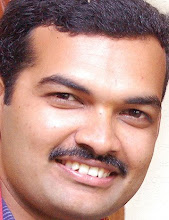¨Á®å ªÀÄgÀ½ §gÀ¨ÁgÀzÉ...
ªÁí! ºÉÃVvÀÄÛ ¨Á®å. ªÀÄgÀ½ §A¢zÉæ M¼ÉîâvÀÄÛ. J®èjUÀÆ ºÁUÉ ¨Á®åzÀ°è vÀAzÉ ¨ÉÊzÀÄ, ºÉÆqÉAiÀÄĪÁUÀ AiÀÄĪÀPÀ£ÁV UÀqÀØ, «ÄÃ¸É ©lÄÖ C¥Àà£À£Éßà ºÉzÀj¸ÀĪÁ¸É. DzÀgÉ UÀqÀØ, «ÄÃ¸É §AzÁUÀ CzÀ£ÀÄß næA ªÀiÁqÀÄvÀÛ EgÀĪÀÅzÀÄ PÀµÀÖ JAzÉÆà K£ÉÆ ¨Á®åªÉà M¼ÉîÃzÀÄ C¤¹©qÀÄvÉÛ. ¨Á®åªÉà ºÁUÉ PÀ¼ÉzÀ £ÀAvÀgÀ JµÀÄÖ ºÀÄqÀÄQzÀgÀÆ ¹UÀzÀ ¤£ÉߪÀgÉUÀÆ Q¸ÉAiÀįÉèà EzÀÝ aÃn!!
E«ßUÉ FUÁåPÉ ¨Á®å £É£À¥ÁAiÀÄÄÛ CAvÀ CAzÉÆ̼ÁÛ E¢ÃgÁ? ªÉÆ£Éß CAzÉæ PÀ¼ÉzÀ ¨sÁ£ÀĪÁgÀ ªÀÄ£ÉUÉ ºÉÆÃVzÉÝ. ªÀÄ£ÉUÉ ºÉÆÃzÉæ QæPÉmï DqÉÝ ¨ÉÆÃgÉÆÃzÉà E®è. FUÀ ªÀļÉUÁ®. CzÉÌ ªÀÄ£É M¼ÀUÉà DqÁÛ E¢é. EzÀÄ £À£ÀUÁUÀ°, £À£Àß dvÉ DqÀĪÀªÀjUÁUÀ°, ªÀÄ£ÉAiÀĪÀjUÁUÀ° ºÉƸÀzÉãÀ®è. aPÀ̪À¤gÀĪÁVAzÀ®Æ ªÀļÉUÁ®zÀ°è ªÀÄ£ÉAiÉÄà ªÉÄÊzÁ£À (ªÀÄ£ÉAiÉÄà ªÀÄAvÁæ®AiÀÄzÀ ¸ÀÆàwð!!).
ªÉÆ£Éß DqÀĪÁUÀ ªÀiÁvÀæ M§â ºÉƸÀ§ EzÀÝ. DvÀ£À MAzÀÄ ºÉÆqÉvÀPÉÌ ¨Áån¤AzÀ a«ÄäzÀ ZÉAqÀÄ £ÉÃgÀªÁV n« ªÉÄÃ¯É vÀÆUÀÄ ºÁQzÀÝ UÁå¸ï¯ÉÊmïUÉ §r¬ÄvÀÄ. ¥À¼ï.... UÁè¸ÀÄ ¥ÀÄrAiÀiÁVvÀÄÛ. ¥ÀÄtå (£À£ÀßzÉÆ vÀAzÉAiÀÄzÉÆ?) n«AiÉÆAzÀÄ MqÉ°®è. vÀPÀët J®è Qèãï. AiÀiÁjUÀÆ UÉÆvÁÛV®è. ªÀÄgÀÄ¢£À UÁè¸ï vÀAzÀÄ ºÁPÀ®Ä ¤zsÀðj¹zɪÀÅ. PÀÆqÀ¯É £À£Àß vÀªÀÄä ºÉÆÃV ¸ÀAeÉ PÀgÉAmï ºÉÆÃUÀ¢gÀ° JAzÀÆ zÉêÀgÀ°è ªÀÄ£À«AiÀÄ£ÀÆß ElÖ.
DzÀgÉ, JA¢£ÀAvÉ ¸ÀAeÉ PÀgÉAmï ºÉÆÃUÀ¨ÉÃPÉ. vÀAzÉ UÁå¸ï¯ÉÊmï ºÀZÀÑ®Ä ºÉÆÃzÀgÀÄ. UÁå¸ï¯ÉÊmï£À°è MAzÀÄ ZÀÆgÀÄ PÀÆqÀ UÁè¸ï E®è. J°èºÉÆìÄvÀÄ? QæPÉmï DrzÁæ? CAvÀ vÀAzÉ PÉýzÀÄæ. E®è C£À߯Á¢ÃvÉ? ªÀÄUÀ zÉÆqÁØVzÁÝ£É JAzÉÆà CxÀªÁ zÉÆqÁØzÀgÀÆ ¸Àé®àªÀÇ §Ä¢Þ §A¢®è CAvÀ¯ÉÆà vÀAzÉ ¨ÉʬÄè®è.
CµÀÄÖ ªÀiÁr ªÀÄgÀÄ¢£À ªÀÄAUÀ¼ÀÆjUÉ §AzÀÄ ©mÉÖ. ¤£Éß ¸ÀAeÉ vÀAzÉ ¥sÉÆÃ£ï ªÀiÁr ¨ÉÃeÁgÀÄ §A¢zÉ HjUÉ ¨Á.. CAzÀgÀÄ. zsÀé¤AiÀÄ°è ¨ÉøÀgÀ EtÄQvÀÄÛ. CzÀPÉÌ £Á£ÀÄ PÉýzÉ... UÁå¸ï¯ÉÊnUÉ ºÉƸï UÁè¸ï ºÁQ¹¢ÝÃAiÀiÁ? PÀÆqÀ¯Éà vÀAzÉAiÀĪÀgÀ zsÀé¤AiÀÄ°èzÀÝ ¨ÉøÀgÀ ªÀÄgÉAiÀiÁV £ÀUÀÄ GQÌvÀÄ.
EzÁzÀ £ÀAvÀgÀ ªÀÄ£À¸ÀÄ ¨ÉÃqÀ ¨ÉÃqÀªÉAzÀÆ »AzÀPÉÌ NqÀÄwÛvÀÄÛ. ºËzÀÄ ¨Á®å JµÀÄÖ ZÉ£ÁVvÀÄÛ. C¥Àà ¨ÉÊzÀgÀÆ, ºÉÆqÉzÀgÀÆ, «ÄÃ¸É E®è¢zÀÝgÀÆ, UÀqÀØ ¨ÁgÀ¢zÀÝgÀÆ ¨Á®åªÉà ZÉAzÀ.
¤Ãªï ¨Á®åzÀ°è ºÉÃV¢Ýj UÉÆwÛ®è. £Á£ÀAvÀÆ vÀÄA¨Á Q¯Ár, ¥ÀÄAqÀ£ÁVzÉÝ. ªÀÄ£ÉAiÀÄ PÀA¥ËAr£À M¼ÀUÉ §AzÀ ©Ã¢ £Á¬Ä, PÉÆýUÉ ºÉÆqÉAiÀÄĪÀÅzÀÄ £À£ÀVµÀÖªÁVvÀÄÛ. DzÀgÉ £Á£ÀÄ ºÉÆqÉzÀ PÀ®Äè PÉÆý, £Á¬ÄUÀ½UÉ vÁUÀĪÀÅzÀQÌAvÀ £ÀªÀÄä£É ¥Áè¹ÖPï §PÉmïUÀ½UÉ vÁVzÉÝà ºÉZÀÄÑ. ªÀÄÄA¢£ÀzÀÄ ¤ªÀÄUÉ UÉÆvÀÛ®è...
MªÉÄäAiÀÄAvÀÆ £Á¬ÄUÉAzÀÄ J¸ÉzÀ ZÀ¥Àà®Äè £ÉÃgÀªÁV ¥ÀPÀÌzÀ ªÀÄ£É ¨Á« ¸ÉÃjvÀÄÛ. ªÀÄzsÁåºÀß ªÀÄÆgÀÄ UÀAmÉAiÀiÁzÀÝjAzÀ AiÀiÁgÀÆ £ÉÆÃqÀ°®è. £Á AiÀiÁjUÀÆ ºÉüÀ°®è. DzÀgÉ ªÉÄà wAUÀ¼À°è CªÀgÀÄ ¨Á« QèÃ£ï ªÀiÁqÀĪÁUÀ £À£Àß ZÀ¥Àà¯ï ªÉÄÃ¯É §A¢vÀÄÛ. ¥ÀPÀÌzÀ ªÀÄ£ÉAiÀĪÀjUÉ AiÀiÁgÀzÉAzÀÄ w½AiÀÄ¢zÀÝgÀÆ, ZÀ¥Àà¯ï vÀAzÀÄ PÉÆlÖ £À£ÀߥÀà¤UÉ UÉÆvÁÛVvÀÄÛ ªÀÄUÀ£À QvÁ¥Àw. PÉýzÁUÀ vÉ¥ÀàUÉ £ÀqÉzÀ WÀl£É «ªÀj¹zÉ. DzÀgÉ C¥Àà£À ªÀÄÄRzÀ°è ¹nÖ£À §zÀ®Ä £ÀUÀÄ EvÀÄÛ. ¤Ãªï K£Éà ºÉý ¨Á®å ¹», CzÀgÀ £É£À¥ÀÄ eÉãÀÄvÀÄ¥Àà....









